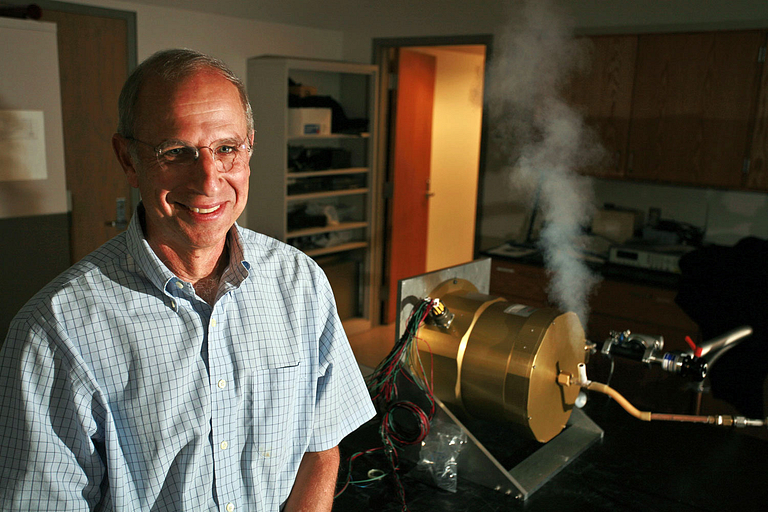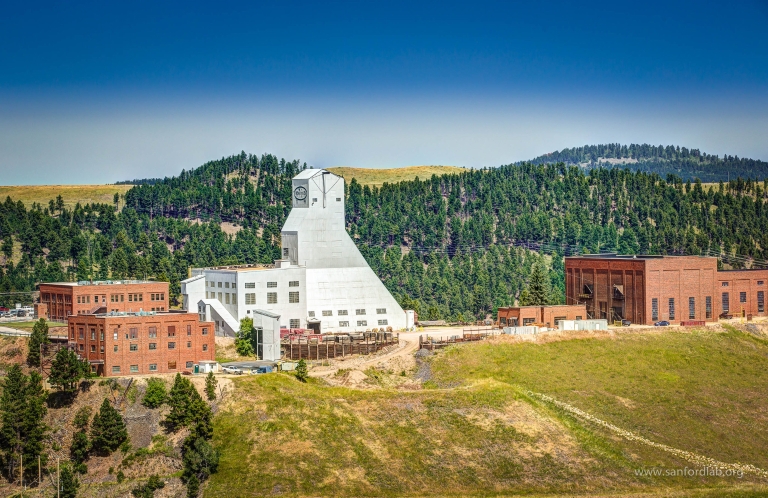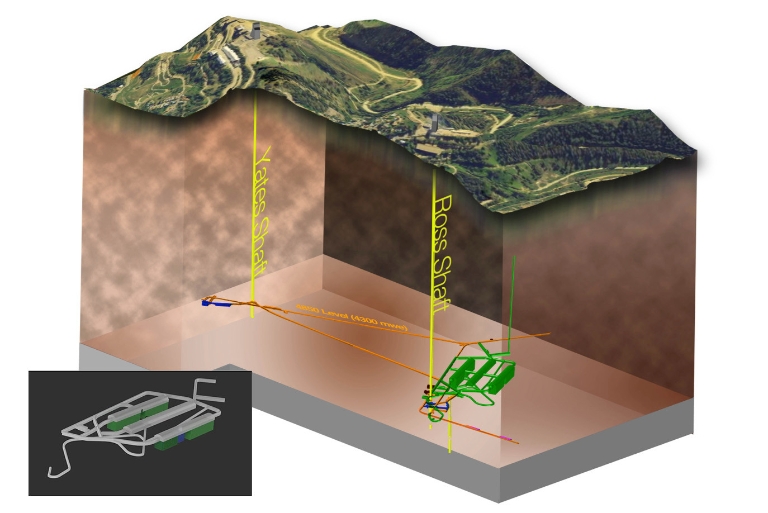
If a star blows up anywhere in our galaxy, Indiana University-developed technology may one day directly measure particles from the explosion – as well as detect the event faster than a telescope.
A major new step in constructing the highly advanced device capable of this and other observations took place nearly a mile underground at 4 p.m. today in South Dakota, where scientists from across the globe celebrated the groundbreaking on a facility designed to advance knowledge of neutrinos, the most abundant matter particles in the universe.
The Long-Baseline Neutrino Facility will house massive scientific instruments as part of the Deep Underground Neutrino Experiment. DUNE will shed light on these mysterious subatomic particles, which many regard as responsible for generating a small but critical imbalance between matter and anti-matter particles at the moment of the Big Bang.
The new facility will sense neutrinos produced by many sources, including an intense beam of the particles generated at Fermilab in Batavia, Illinois.
IU scientists’ role in DUNE includes research and development on a highly sensitive part of the facility to detect neutrinos from other external sources, such as a star’s explosion anywhere in the Milky Way galaxy.

Known as a supernova, this event is the final phase in the life of a massive star, in which the implosion of the stellar object’s core causes a burst of light brighter than 100 billion stars – and is powerful enough to potentially form a neutron star or black hole. The event also spews so many neutrinos into the galaxy that they’re detectable on Earth faster than the light from the explosion, which experiences a delay of several hours compared to the particles.
“The detection of a supernova would be one of the most scientifically exciting events to happen in modern history and could lead to amazing discoveries,” said Stuart Mufson, a professor in the IU Bloomington College of Arts and Sciences’ Department of Astronomy whose lab has been working on prototype “supernova detection” technology since 2008. “The last person to directly observe a live supernova in our galaxy was [German astronomer] Johannes Kepler in 1608.”
The technology could also allow scientists to detect the first direct sign of proton decay, a theoretical phenomenon whose observation could advance the quest for a unified theory of matter and energy.
Mufson said the technology under development at IU is essentially a method to efficiently sense ultra-shortwave UV light generated by neutrino activity deep inside the DUNE detector. After conversion to visible wavelengths, this light is then transported along light-carrying bars to sensors on the edge of the device.

In DUNE, the light-sensing system will need to function inside giant tanks of liquid argon – 70,000 tons of the material cooled to minus 300 degrees Fahrenheit. These tanks are used to detect neutrinos, since interaction between the argon and neutrinos generates both electrons and ultraviolet light. The promise of IU’s light-sensor technology has been demonstrated through a series of prototype tests carried out over the past several years inside a liquid argon facility at Fermilab.
Leadership on the Long-Baseline Neutrino Facility is provided by Fermilab in collaboration with the Sanford Underground Research Facility, an existing network of research labs inside the former gold mine. The first phase of the new facility’s construction requires the excavation of nearly 800,000 tons of rock from the designated detector site nearly a mile underground.
In addition to designing the light-sensing technology, which is one of three final designs under consideration for the neutrino-detection facility, IU scientists were also among the first to encourage using liquid argon to detect neutrinos in DUNE, rather than different materials used in other experiments. The IU team had extensive experience with the detection of light signals inside neutrino detectors through their work on the NOvA Experiment, a liquid scintillator-based neutrino detector operating in northern Minnesota.
“Our team was one of the few early advocates for a liquid argon detector, which we argue will produce the highest quality data – despite the greater challenges involved,” said Jon Urheim, a professor in the IU Bloomington College of Arts and Sciences’ Department of Physics. “We were pleased the project’s leadership ultimately chose an argon-based design.”

A total of 1,000 collaborators from more than 160 institutions in 30 countries are part of DUNE, with IU scientists among the project’s inaugural members.
Other IU scientists who have played a central role in the detector’s development include Denver Whittington, an IU postdoctoral researcher who joins Syracuse University as a faculty member in August, as well as Mark Messier and James A. Musser, professors in the Department of Physics. Urheim also recently coordinated a DUNE working group assigned to demonstrate the experiment’s potential to achieve its scientific goals.
Additional IU researchers on DUNE are postdoctoral researchers Gavin Davies and Erica Smith; and graduate students Micah Groh, Bruce Howard, Teresa Lackey, Chris Macias, Ryan Murphy, Fernanda Psihas and Justin Vasel. IU staff members on the project include Brian Baugh, Mark Gebhard and Mike Lang, technicians in the Department of Physics, and Brice Adams, from the Department of Astronomy.
The first tests of IU’s light-sensing technology in a particle beam, which will inform the final technology choices for DUNE, are slated to begin in summer 2018 at CERN, the world’s largest particle accelerator lab, in Geneva, Switzerland.
The installation of equipment inside the first of the four large neutrino detector tanks at DUNE will begin in 2022, with data collection starting in 2025.

